It has been a decade since Pierer Mobility, who own KTM, snapped up Husqvarna from BMW. Since then, the brand has gone from strength to strength, last year launching the Norden 901, a first step into the ultra-competitive adventure market, and now the Norden 901 Expedition.
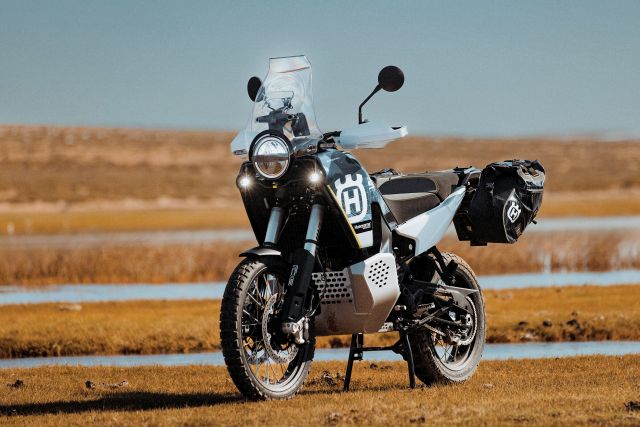
Story: Adam Child ‘Chad’
Photography: Marco Campelli, Sebas Romero
Obviously, the Norden shared its key components (including its LC8 parallel twin engine) and design with KTM’s 890 Adventure and was slotted in between the road-biased 890 Adventure and the seriously competent dirt-focused Adventure R. Now Husqvarna have introduced the Norden Expedition, which is positioned closer to the R.
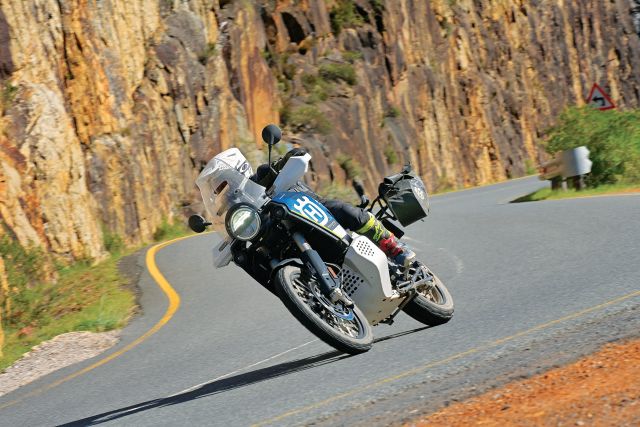
Engine performance remains the same but the Expedition is ready to take on the world. It gets longer-travel WP suspension, similar to the R model’s for greater off-road ability. There is a new screen, heavy-duty bash-plate, a heated seat and grips, plus a pair of soft panniers and a centre stand. A GPS mounting bracket hints at more adventurous ambitions while the “Explorer” riding mode, which is an option on the stock Norden, comes as standard on the Expedition.
Further evidence of its intended focus came in the shape of the test route laid on by Husqvarna for the Expedition’s press launch. The venue was South Africa and the ride a genuine 500-kilometre-plus adventure, 80 per cent of it off road into the wilderness. Conditions varied from fast and dusty trails to deep sand and water crossings. We even loaded the soft bags, ready for a night’s camping (with zebras for neighbours).
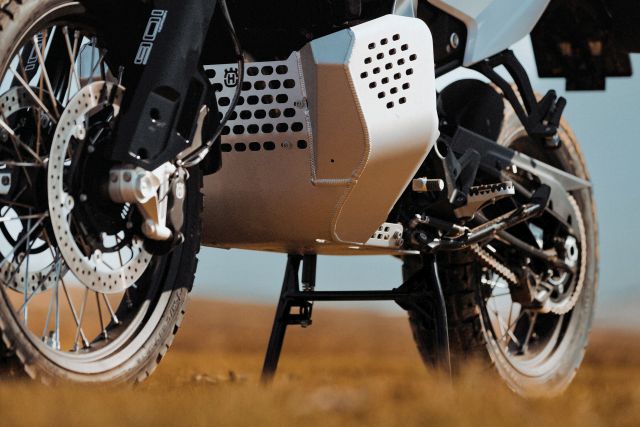
The LC8 motor is carried over, unchanged, to the Norden 901 Expedition. That means the same 105 hp at 8,000 rpm as the stock Norden (and the KTM 890 Adventure and Adventure R) with the same peak torque of 100 Nm arriving at 6,500 rpm. The Expedition does get the additional Explorer riding mode as standard (it is an extra-cost option on the base machine) alongside Rain, Street, and Offroad settings. The standard Norden’s up-and-down “Easy Shift” quick-shifter is also carried over to the Expedition, offering clutch-less changes in both directions through the six-speed ’box.
As noted, the LC8 twin is a proven recipe and while some might be disappointed, the Expedition does not come with an increase in power and torque as compared to the standard bike; it is simply not needed: 105 hp and 86.5 Nm put it right in the ballpark with the competition, delivering a little more peak power than Honda’s Africa Twin and a smidge less than Ducati’s Desert X.
You immediately feel at home with the LC8: power levels, throttle response, and fuelling are just-so. There are no glitches or niggles and, while the twin is distinctly lively, it is not overpowering or intimidating either.
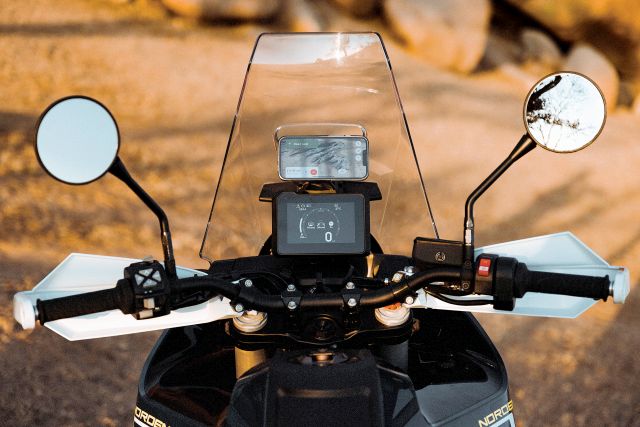
In Street mode, jump on and ride—it is that simple. The 889-cc parallel twin is hugely versatile, pulling cleanly from low in the rpm thanks to a helpful spread of torque or lofting the front wheel at will in the first two gears as the numbers build on the tacho. On a private section of South African road, the Expedition attained an indicated 200 km/h without fuss and was happy to cruise at high speed—and, yes, cruise control comes as standard.
I spent most of the African adventure in either Offroad mode or Explorer mode. In Offroad, a soft, easy-to-live-with power delivery gives the rear Pirelli Scorpion Rally STR an easier time when searching for grip over large rocks or sand, which we encountered frequently on our two-day test. In Explorer mode, the rider can trim the throttle further or opt for a quicker “Rally” response to give an instant kick of torque to lift the front over deep puddles or smaller obstacles. You can also trim the slip control to your setting (between levels “1” and “9”) rather than going with a fixed setting from the factory.
For example, in Offroad mode, the throttle is given a gentle, dirt-friendly setting and slip is fixed on level four. In Explorer mode, however, you can have a faster response with that Rally throttle and reduce slip to one or opt for a maximum of nine. The traction control can be completely removed in all modes, even on the move, but automatically reverts to “on” when the bike’s ignition is turned back on.
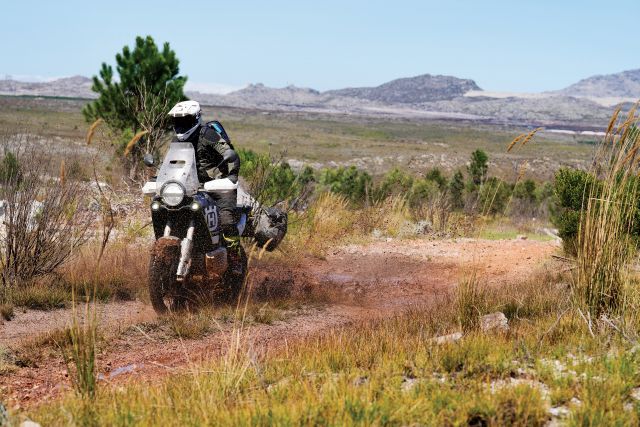
Away from tarmac, riding on terrain that varied from deep sand to large boulders to loose-top tracks that we “cruised” at 110 km/h, I preferred the dedicated, pre-prepared Offroad mode. Then, once back on the road, I flicked back to Street, with or without TC, depending on traffic and how much one-wheeled fun I was planning.
I nearly forgot… Rain mode caps the power output to 82 hp and softens the throttle response, making it feel lazy and elastic. However, given the scorching heat and complete absence of a single cloud, I only sampled it for test purposes but imagine that it might become more useful in the wet.
All the Expedition’s riding modes are clearly shown and understood on the colour five-inch TFT dash and it is relatively simple to scroll through the options and even turn the TC off and on again. Incidentally, the cruise control cannot be activated if the TC is turned off.
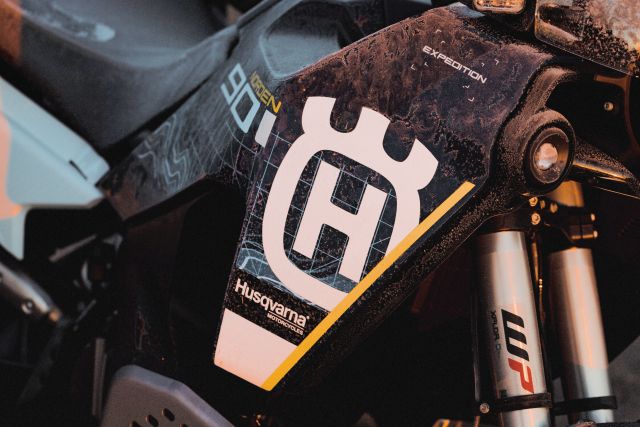
The Expedition’s KTM 890 switchgear is easy to navigate but not immediately intuitive. There are short-cuts available from the menu but, when making a transition from road to off-road terrain, it took me several glances at the dash and stabs at the buttons to choose the correct mode. Not ideal when riding at 110 km/h-plus on potholed tracks patrolled by gangs of baboons!
Chassis-wise the Expedition moves closer to the 890 Adventure R, with the same long-travel WP Xplor 48-millimetre forks for 240 mm of front travel, replacing the 43-mm WP Apex items used on the standard Norden. At the rear, there is a similar upgrade. The standard Norden 901’s Apex monoshock is gone, in its place you will find a WP Xplor PDS, boosting travel from 215 mm to 240 mm.
Longer travel suspension increases ground clearance from 252 mm to 270 mm and pushes the wheelbase out from 1,513 mm on the base Norden 901 to 1,529 mm on the Norden 901 Expedition.
Making sure the Expedition can take on the world, the addition of rally parts, including a heavy-duty skid-plate to protect the belly-mounted fuel-tank and engine, a centre stand, and standard-fit luggage-rack, unavoidably means the Expedition is heavier than the stock Norden 901.
Although the Expedition shares the taller and longer-travel suspension of the 890 R, its internal spec differs from the KTM in terms of springs, shims, and settings. The new Norden might look as full of the same gnarly dirt intent as the 890 R but is, in fact, a little more compliant and easier to live with. On the road, I initially wondered if its forks were on the soft side, particularly during the early part of their stroke, and was going to add a little compression damping or spring pre-load (easily done via adjusters on the fork tops). However, road performance and high stability were excellent. Our test route took the Norden Expedition through towns, along high-speed sweepers and even a motorway, and the 21-inch front wheel remained planted and sure-footed.
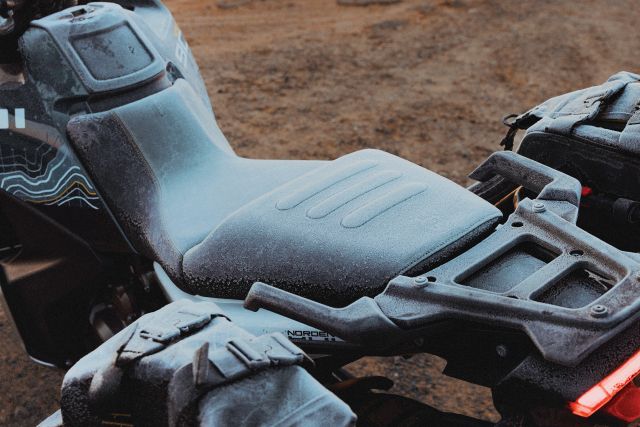
On tighter roads, that slight softness and dive became more noticeable when closing the throttle and braking into the corner; taller and heavier riders may want to add a little more support on the suspension (sporty suspension settings can be found under the seat). Nevertheless, the 901’s handling on challenging roads was truly impressive, crisper and smoother than the excellent 890 R’s even, with the Pirelli Scorpion Rally rubber offering great feedback and instilling confidence on unknown surfaces.
Husqvarna also treated us to some of the most challenging off-road riding I have experienced on a road bike launch. Clearly, they were confident in their product as we were invited to take on everything from mud, water, rocks and rubble to cliff-like ascents, and my favourite of all: deep energy-sapping sand.
One section of the wretched stuff was so deep, I think I dropped the Expedition four times in 20 minutes while my average speed was barely 15 km/h. Then we hit a fast, flowing section of loose gravel and for over an hour averaged 110 km/h. It was truly amazing what the Norden could put up with and do so on standard tyres with standard suspension and the added weight of fully loaded saddlebags.
I dropped the bike a few more times over the two-day test, but nothing broke or was damaged beyond the odd scuff. I tried to drown it on several occasions and bounced it cruelly off rocks, the large bash-plate taking a hammering, and it came out laughing. The Expedition soaked it up—it is an incredible bike to ride off road, one that complements the rider and is happy to take on challenges I would normally only contemplate on a dedicated enduro bike.
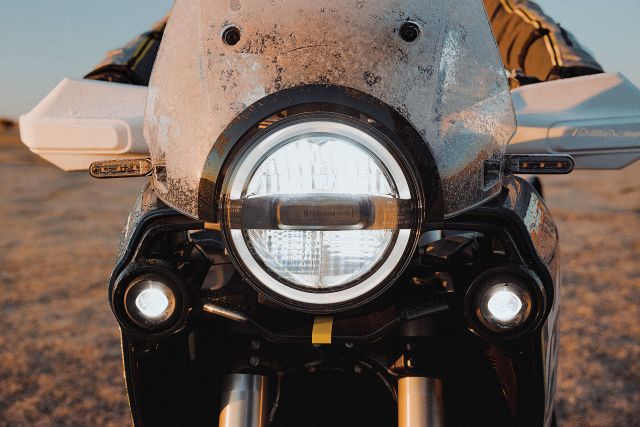
For riders who do not ride off road every week but have a genuine yearning to pilot their adventure bikes into the wild, the Expedition will prove more than enough. It is worth mentioning, too, that the Pirelli Scorpion Rally STR tyres that were so accomplished on South African asphalt excelled on the dust-dry dirt too.
However, there are limitations to the Husqvarna’s abilities and I did experience a few moments of off-road instability when riding rough and potholed tracks at 110 km/h. These brief but alarming head-shakes may have been in part due to that softness of the forks in the first part of their stroke. It may also have been a result of the sheer loaded-up weight of the bike. With the heavy-duty bash-plate, rack, and bags, the Expedition’s weight is a claimed 214.5 kilograms, up 10 kilos on the standard Norden 901 or 229 kg with fuel. For comparison, Honda’s larger-capacity CRF1100 Africa Twin comes in at 226 kg (kerb weight), fully fuelled.
It does not feel heavy on the move and rolls over rough terrain with greater agility than the Africa Twin, but it does give the suspension a hard workout, especially with a bulkier rider and luggage fully loaded. Certainly, the more experienced riders desirous of pushing to competition levels of riding will want to tweak the suspension accordingly. And it will be interesting to compare the Husky directly to the KTM 890 R, which, I suspect, will be slightly more composed on super-fast dirt trails.
On harder and more technical terrain, with the rider standing up but leaning back to take weight off the front, the Expedition’s front end was faultless and took all the punishment sent its way. But if I was planning a trip where I would be taking on some high-speed gravel trails, I would look to set up the fully adjustable quality suspension to match my riding and style.
Off road, the ABS is outstanding: not lean-sensitive but the clever system finds grip that you just do not think is available and more than once the system rescued me from a tricky situation. In Offroad mode, the ABS is no longer active on the rear, which allows you to flick the rear around on sharp turns with ease.

Back on the road, in Street and Rain modes the ABS becomes lean-sensitive with ABS working at the rear too. Only once when hard braking in Street mode did I feel the system kick, yet even then it was smooth and faultless. You can turn off the rear ABS for street riding should you wish.
The only niggle is with the brakes themselves. In common with the whole of KTM’s 890 range and the standard Norden 901, the Expedition lacks bite from its J Juan calipers, especially when you compare them to the excellent Brembo race items on Ducati’s Desert X. The stoppers are perfectly adequate and have good feel but, laden with luggage and perhaps a pillion, you will need four fingers on the lever hauling down from speed, not an easy two as in the case of the Ducati.
The Expedition is supposedly ready to take on the world; therefore, comfort is a priority. The standard heated seat and grips, plus a larger screen are an obvious advantage. The Expedition comes with a GPS mount and Husqvarna’s “Connectivity Unit” to link your phone to the TFT dash (both are options on the standard Norden).
The luggage, again taken from the accessories catalogue and made standard equipment on the Expedition, adds 18 litres of storage on each side of the bike (but can be quickly removed if it is not required) and the centre stand is a helpful addition, too. The cruise control is easy to operate from the left bar.
Husqvarna have improved rider comfort with the much-needed taller screen. It offers excellent wind protection on road and is low enough, when you are standing up on the pegs off road, not to be a distraction. While we are discussing height, the Expedition’s long-travel suspension means the seat height has increased from 854/874 mm to 875/895 mm, so it is on the tall side. The (heated) seat is narrow towards the tank, then widens rearwards for comfort. I did have a few moments when the ground was further away than expected, but never toppled over and short riders need to slide forward to the thinnest part of the seat when coming to a standstill. There is an optional lower seat, but, unlike the standard item, it is not heated.

Husqvarna claim the same fuel economy, 22.22 km/l, for the stock Norden 901 and the Expedition variant despite the added weight (10 kilos) and messier aerodynamics, larger screen, and luggage of the 2023 bike. In the past, I have managed 5.1 litres/100 km (or 19.61 km/l) on the standard Norden. On day one of this test, the Expedition averaged 4.9 l/100 km (20.41 km/l) but my riding in Africa was not aggressive. This will still equate to a range which is more than enough and I would happily take on a 400-km stint non-stop. Set the cruise control, sit in behind the big screen, turn on the heated grips and seat, if needed, and churn out the big miles. No problem.
For this test, Husqvarna laid on two long days and over 500 km of mainly off-road riding in blistering heat and wanted to show how their new machine would cope with sand, rocks, bogs, deep water, and extra-rapid trails. It even had to carry my clobber in the standard panniers. It was a true adventure and test of the new Expedition and the motorcycle came out with flying colours.
I like the new styling and appreciate the Expedition’s looks more than those of its KTM 890 R counterpart. I grew attached to it despite having to pick it up out of deep sand on more than several occasions. The Expedition sits above the standard Norden but is not as extreme as the 890 R. It is easier to ride and live with both on and off road.
The Expedition makes the 901 more versatile. With a larger screen, heated grips, and seat, it is even more comfortable. With a centre stand and luggage as standard, it is even more practical. With longer-travel suspension and a sturdy bash-plate, it can take on tougher terrain and you have the added Explorer riding mode as standard. And this extra versatility has come without any notable sacrifices.
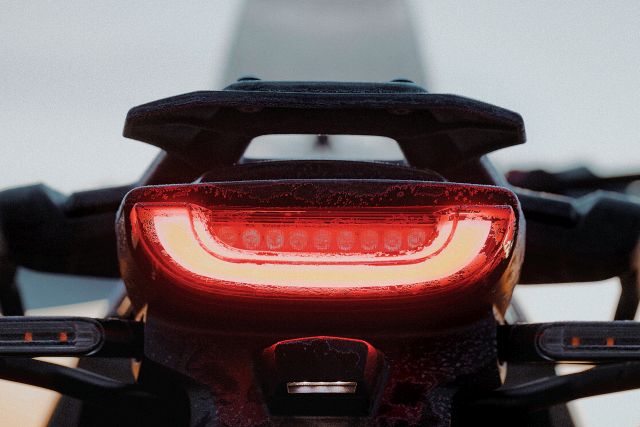
Yes, I would like stronger brakes with a fraction more bite, a slightly easier to use dash, and, if I were intending to ride fast off-road, I would want to tweak the fully adjustable WP suspension to suit.
Away from the drama of riding in Africa, the Norden Expedition makes more sense to most riders than the immediate competition of their own and sister brands. Why would you buy a standard KTM 890 or Norden when you can have the Expedition with all its extras for a reasonably small increase in price? The new Expedition really is a ready-made globe-trotting adventure bike.
At £13,599 (Rs 13.60 lakh), the Norden 901 Expedition is only £900 (Rs 90k) more expensive than the standard Norden 901 (£12,699 = Rs 12.70 lakh) and that looks like something of a bargain when you look at the amount of additional kit that is included. Totting up the extras that come with the Expedition—including 18-litre side-bags and their mounts, a tall screen, heated grips and seat, a centre stand, and more—the total comes to around £2,000 (Rs 2 lakh) worth. And that is without considering the uprated suspension that that Expedition boasts of, front and rear, over the standard Norden 901.
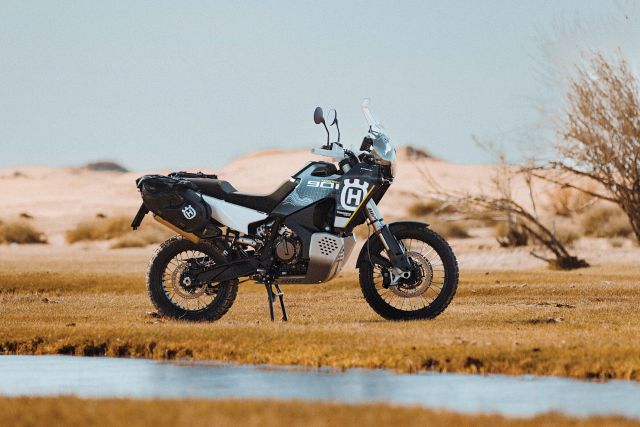
Once you add the value of the uprated WP suspension and the extra riding mode, the Expedition looks like even better value. KTM’s own 890 R (£13,299 = Rs 13.30 lakh) with a similar suspension set-up costs a fraction less, but it cannot match the Expedition’s specifications. Adding luggage, screen, centre stand, and all the extras to the KTM will take its price past £15k (Rs 15 lakh).
Technical Specifications
Price: £13,599 (Rs 13.60 lakh)
Capacity: 889 cc
Bore x Stroke: 68.8 x 90.7mm
Engine layout: Liquid-cooled, parallel twin
Engine details: DOHC, eight-valve
Power: 105 hp at 8,000 rpm
Torque: 100 Nm at 6,500 rpm
Top speed: 201 km/h
Transmission: Six-speed, chain drive
Average fuel consumption: 22.22 km/l (claimed)
Tank size: 19 litres
Max range to empty: 402 km
Rider aids: Standard four ride modes, Bosch cornering ABS, and cornering traction control
Frame: Steel trellis
Front suspension: WP Xplor 48-mm, 240-mm travel, fully adjustable
Rear suspension: WP Xplor PDS shock-absorber, fully adjustable
Front brake: Twin 320-mm discs, four-piston J Juan radial calipers
Rear brake: Single 260-mm disc, two-piston J Juan caliper
Front wheel/tyre: 90/90-21 Pirelli Scorpion Rally STR
Rear wheel/tyre: 150/70-18 Pirelli Scorpion Rally STR
Wheelbase: 1,529 mm
Ground clearance: 270 mm
Weight: 214.5 kg (dry)


Leave a Reply